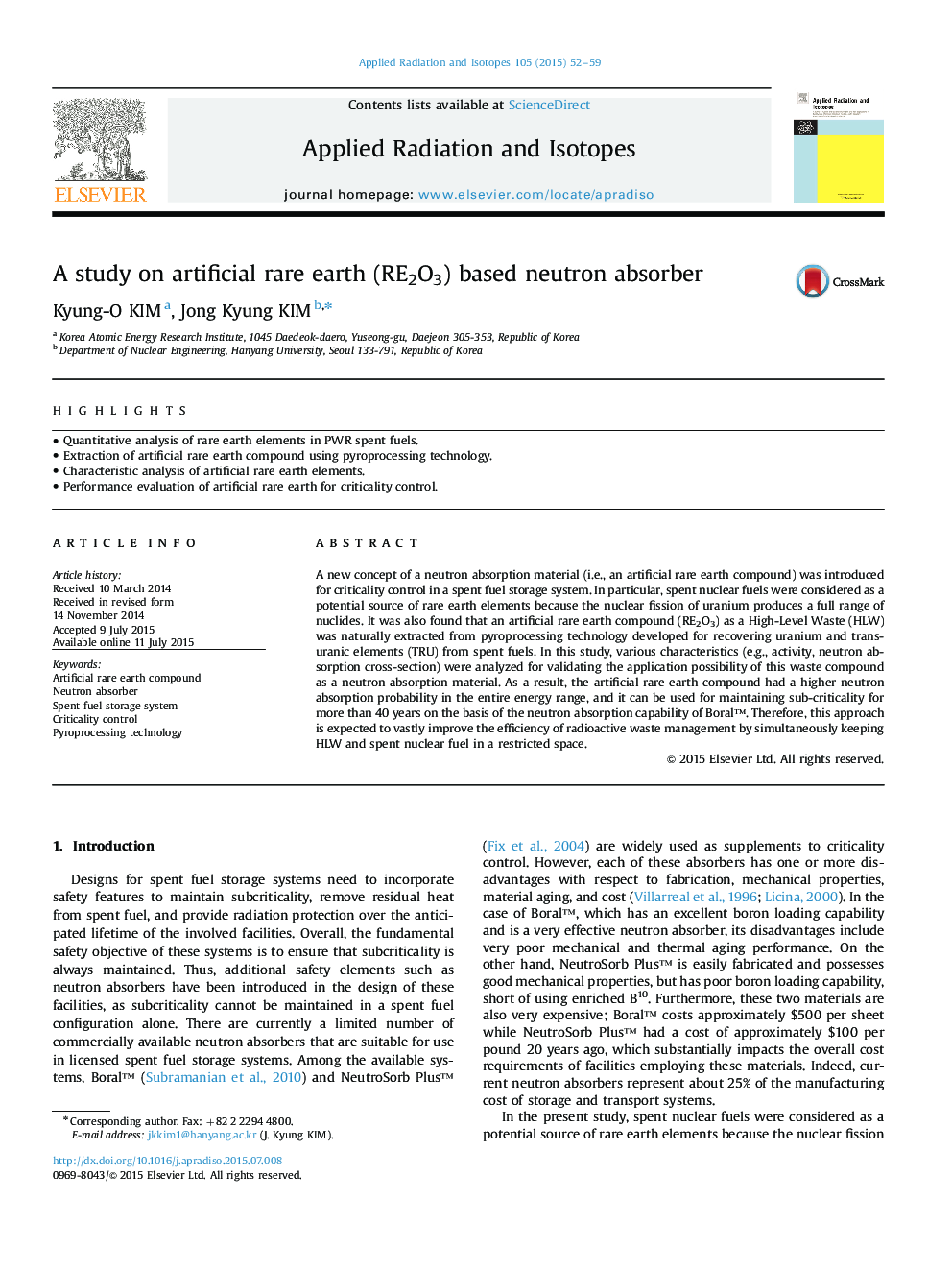| Article ID | Journal | Published Year | Pages | File Type |
|---|---|---|---|---|
| 1875806 | Applied Radiation and Isotopes | 2015 | 8 Pages |
Abstract
A new concept of a neutron absorption material (i.e., an artificial rare earth compound) was introduced for criticality control in a spent fuel storage system. In particular, spent nuclear fuels were considered as a potential source of rare earth elements because the nuclear fission of uranium produces a full range of nuclides. It was also found that an artificial rare earth compound (RE2O3) as a High-Level Waste (HLW) was naturally extracted from pyroprocessing technology developed for recovering uranium and transuranic elements (TRU) from spent fuels. In this study, various characteristics (e.g., activity, neutron absorption cross-section) were analyzed for validating the application possibility of this waste compound as a neutron absorption material. As a result, the artificial rare earth compound had a higher neutron absorption probability in the entire energy range, and it can be used for maintaining sub-criticality for more than 40 years on the basis of the neutron absorption capability of Boralâ¢. Therefore, this approach is expected to vastly improve the efficiency of radioactive waste management by simultaneously keeping HLW and spent nuclear fuel in a restricted space.
Keywords
Related Topics
Physical Sciences and Engineering
Physics and Astronomy
Radiation
Authors
Kyung-O KIM, Jong Kyung KIM,
